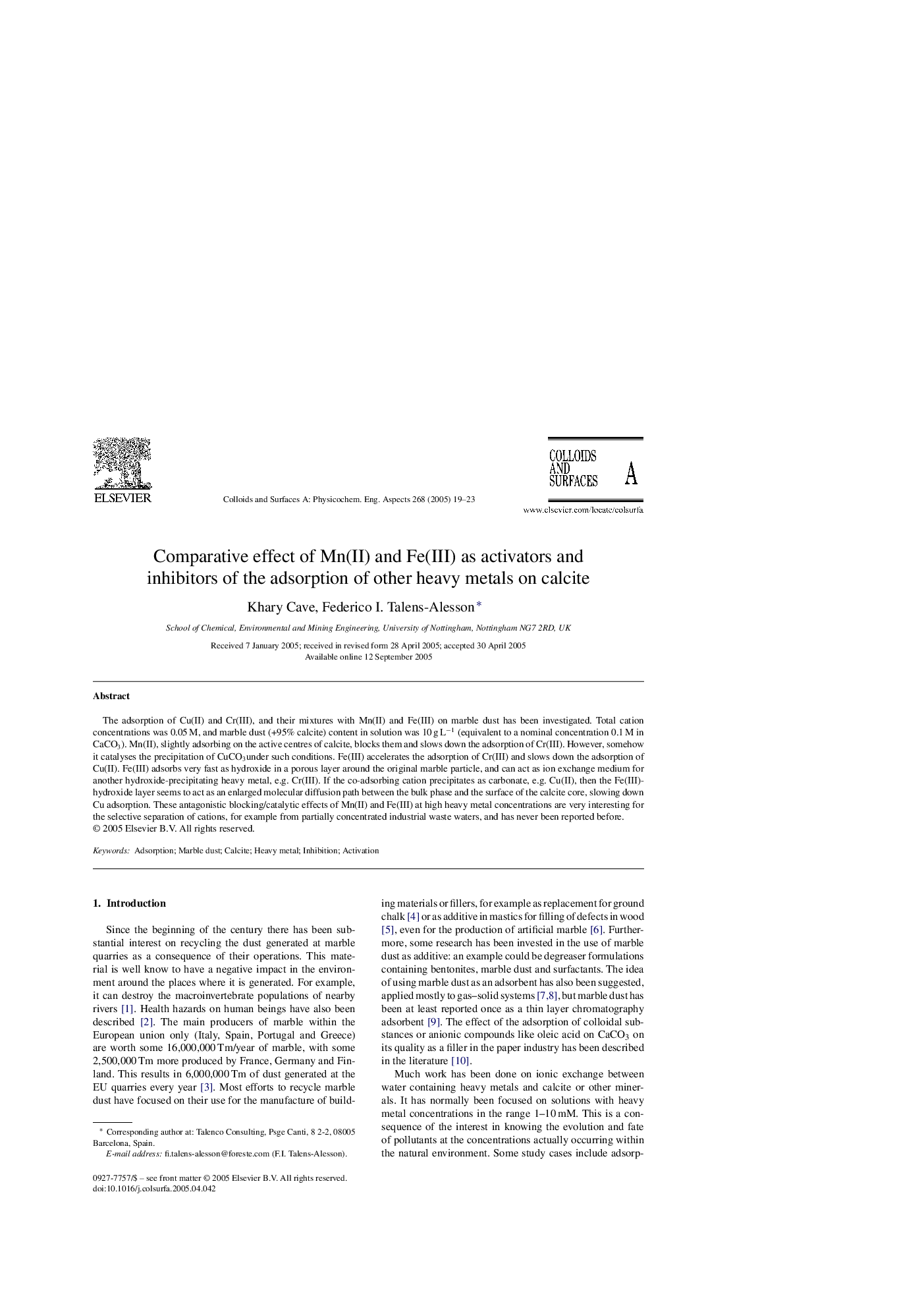| Article ID | Journal | Published Year | Pages | File Type |
|---|---|---|---|---|
| 9675594 | Colloids and Surfaces A: Physicochemical and Engineering Aspects | 2005 | 5 Pages |
Abstract
The adsorption of Cu(II) and Cr(III), and their mixtures with Mn(II) and Fe(III) on marble dust has been investigated. Total cation concentrations was 0.05 M, and marble dust (+95% calcite) content in solution was 10 g Lâ1 (equivalent to a nominal concentration 0.1 M in CaCO3). Mn(II), slightly adsorbing on the active centres of calcite, blocks them and slows down the adsorption of Cr(III). However, somehow it catalyses the precipitation of CuCO3under such conditions. Fe(III) accelerates the adsorption of Cr(III) and slows down the adsorption of Cu(II). Fe(III) adsorbs very fast as hydroxide in a porous layer around the original marble particle, and can act as ion exchange medium for another hydroxide-precipitating heavy metal, e.g. Cr(III). If the co-adsorbing cation precipitates as carbonate, e.g. Cu(II), then the Fe(III)-hydroxide layer seems to act as an enlarged molecular diffusion path between the bulk phase and the surface of the calcite core, slowing down Cu adsorption. These antagonistic blocking/catalytic effects of Mn(II) and Fe(III) at high heavy metal concentrations are very interesting for the selective separation of cations, for example from partially concentrated industrial waste waters, and has never been reported before.
Related Topics
Physical Sciences and Engineering
Chemical Engineering
Colloid and Surface Chemistry
Authors
Khary Cave, Federico I. Talens-Alesson,
